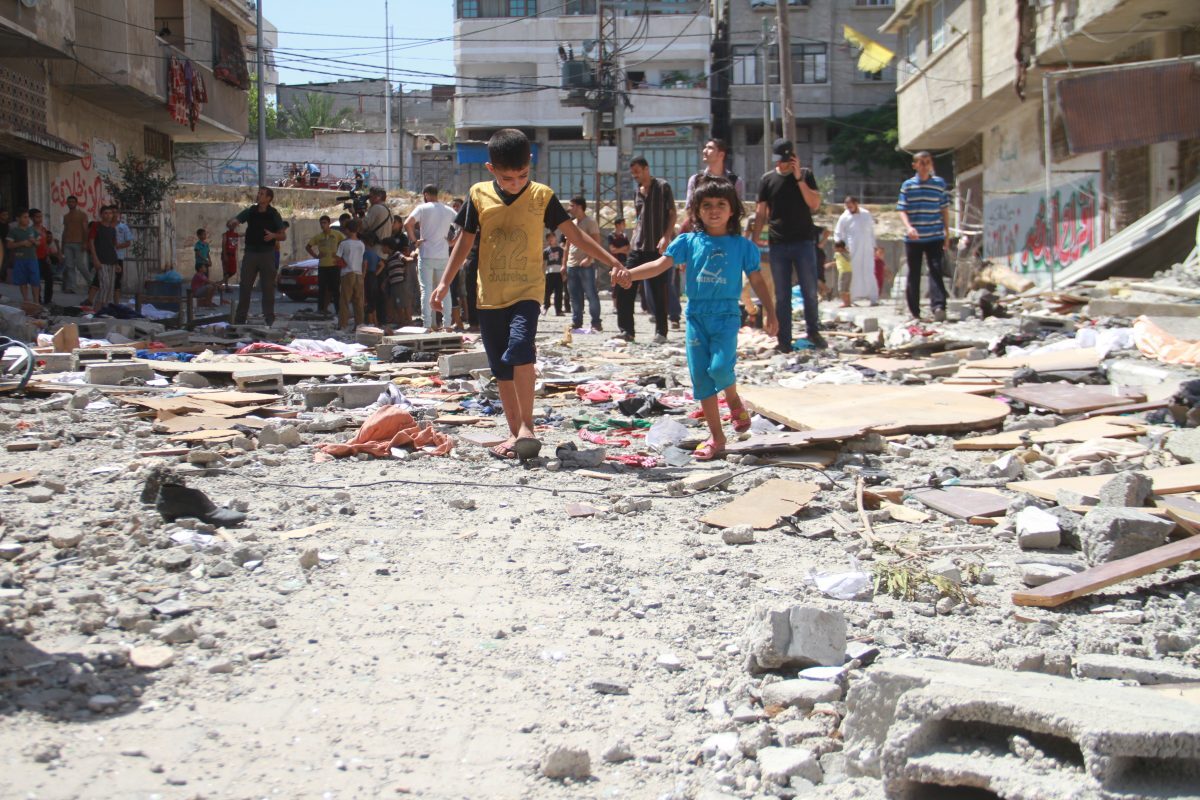This month, Palestinians mark 50 years of occupation and 10 years of siege

This month, Palestinians are marking 50 years of the Israeli occupation and a ten year siege on the Gaza Strip.
The occupation
Over the decades, Palestinians have witnessed failed peace talks, Intifadas, settlement building, bombardments and an ongoing erosion of their human rights. They have seen thousands killed, thousands more arrested and detained and their friends and families separated by checkpoints, IDs, walls and closures.
The occupation is often justified or made ‘normal’ through the lens of Israeli security or the ‘war on terror’, however there are almost 4.7 million people currently struggling to live their lives with dignity under what many deem an Apartheid. An increase in home demolitions, confiscation of lands and restrictions on movement for Palestinians has left people poverty stricken and downcast. Fifty years is a long time to wait for justice and freedom.
The siege
This year also marks ten years since the siege on Gaza began. With one of the highest unemployment rates in the world, this small strip of land will be ‘unlivable by 2020’. 95% of the water in Gaza unsafe for human use and residents can go up to 20 hours a day without electricity. It is not hard to imagine the frustration and despair facing the 2 million people locked inside.
Having worked in both the West Bank and Gaza, it is easy to meet someone with an almost unbelievable encounter with the occupation. Tales of children arrested in the middle of the night, settler violence, giving birth at checkpoints or during a bombardments are relayed in an almost resigned matter of fact manner.
Vulnerable groups are the hardest hit
The true lived impact of this inhumane system is immense and complex. Thousands of Palestinians negotiate their lives around what they cannot do and where they cannot go, with the elderly, women, children and people with disabilities often the most affected.
Despite their increased health needs, the older generation receive limited health and psycho-social care tailored to their needs and their independence is restricted due to their lack of mobility.
Poverty rates among female headed households in Palestine are 1.3 times higher than households headed by men, with up to 30% of women led families falling below the poverty line.
Lack of mobility is the most prevalent constraint among 48% of disabled individuals. Three out of four people with disabilities in occupied Palestine, who are 18 years old and above, say they do not use public transportation due to the lack of necessary adaptations in the infrastructure.
Among children, access to education is limited. In the West Bank, children can wait at checkpoints for hours each day on their route to school, while the 700km segregation wall prevents them from taking part in academic activities.
Ongoing trauma
The generational trauma suffered by Palestinians is understandably rife. Since 1948, the Gaza Strip has been subjected to numerous large scale attacks, with thousands of families displaced at least once in the last ten years alone. In a study carried out in 2012 by the Palestine Trauma Centre, it was estimated that 88% of children in Gaza were suffering from ongoing PTSD. Since the 2014 Gaza assault, this figure will be significantly higher.
Interpal in the field
Interpal works in the field to provide humanitarian aid, community support, education aid and medical aid. Our projects work towards alleviating the burdens faced by some of the most vulnerable groups in Palestinian society. Whilst we can help by working to alleviate poverty and supporting healthcare and education, it is also important for us to raise awareness of the challenges Palestinians face and the suffering they experience every day. To find out more about how you can help, visit www.interpal.org.
Calculate your Zakat
Confused about how to calculate your Zakat? Try our simple-to-use calculator





